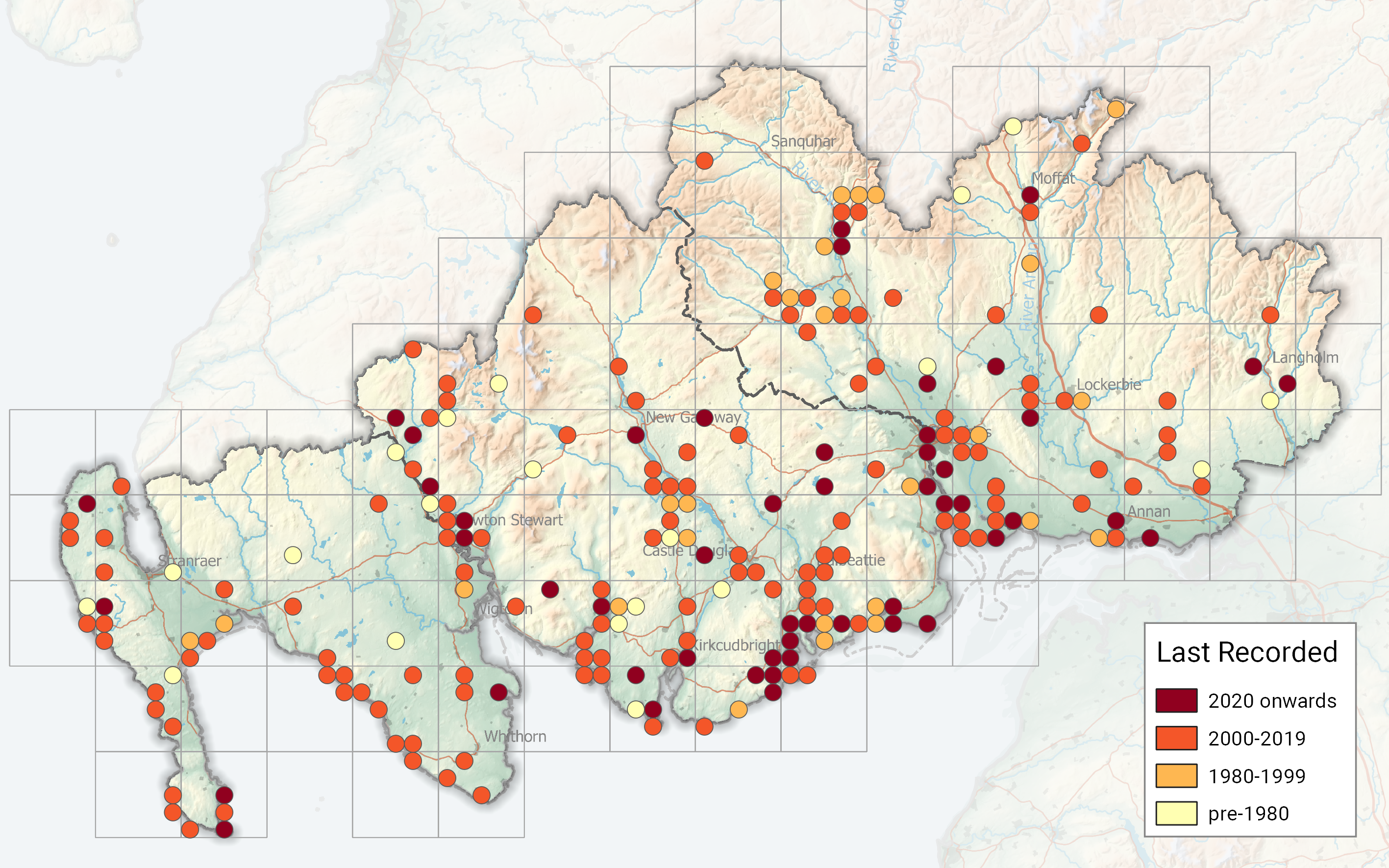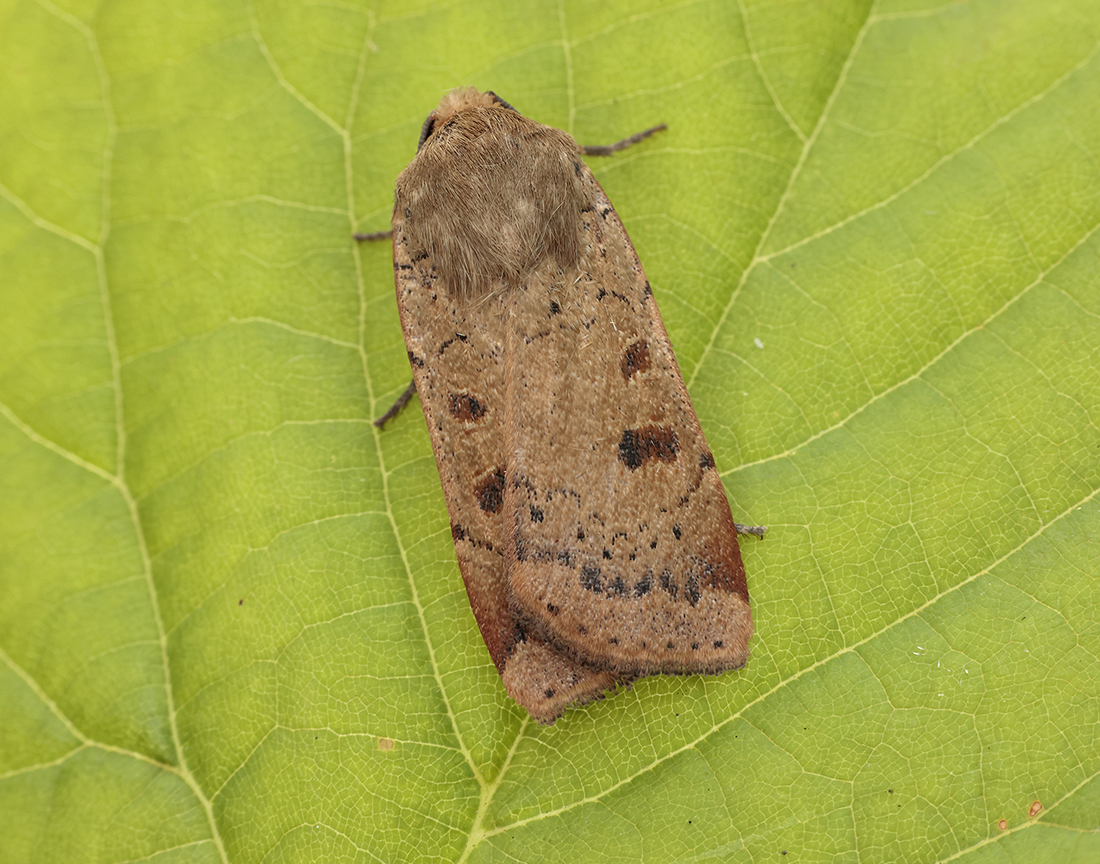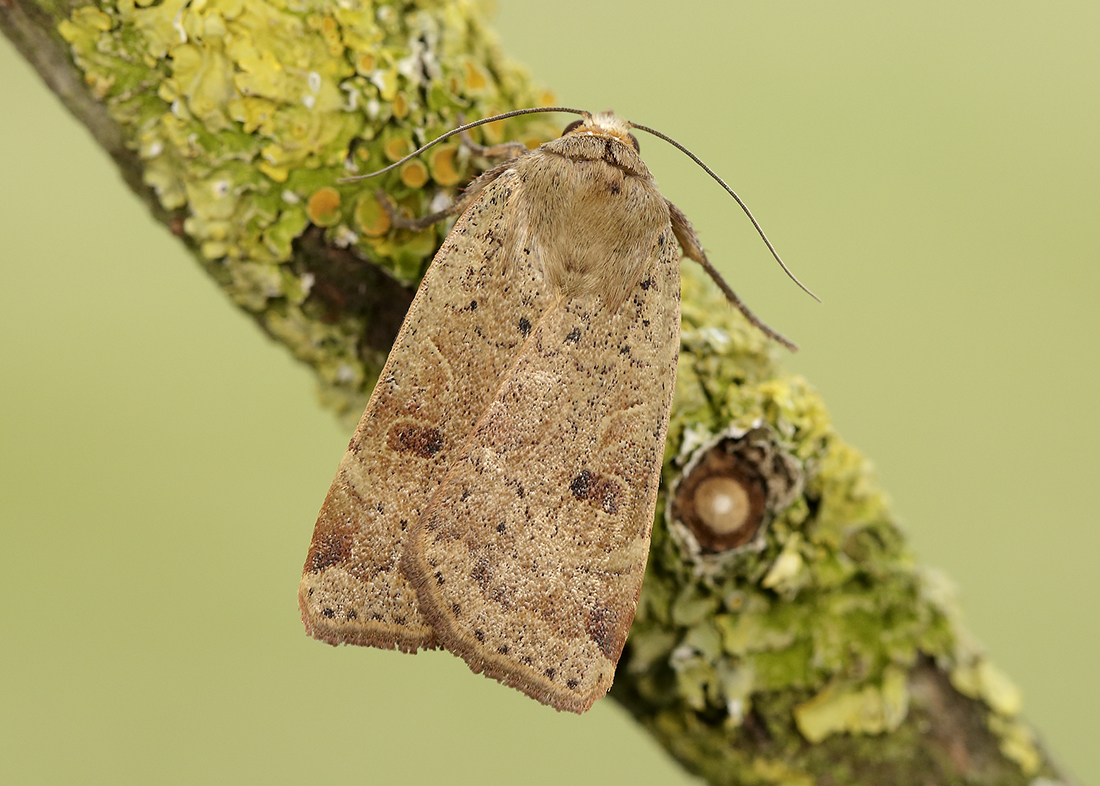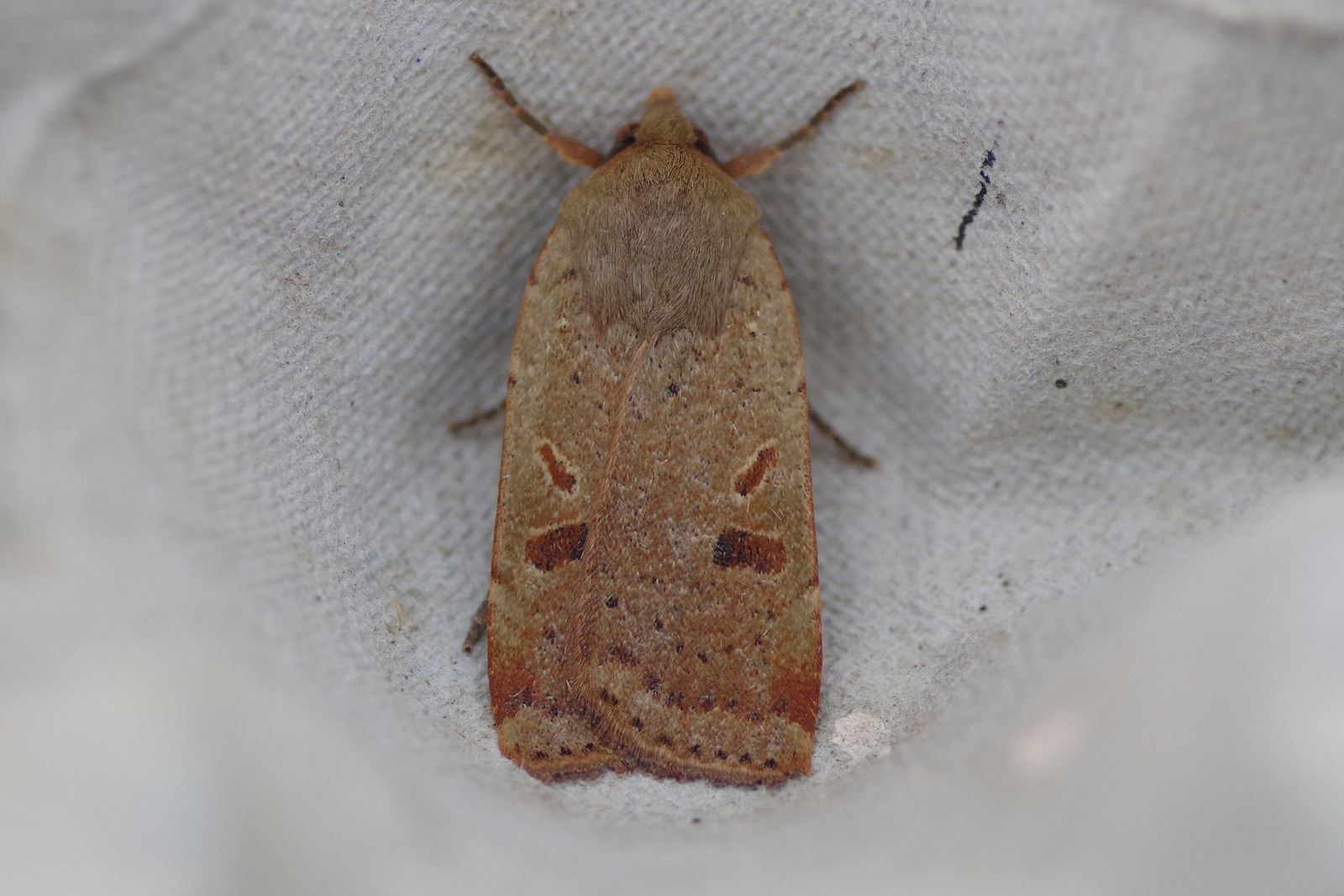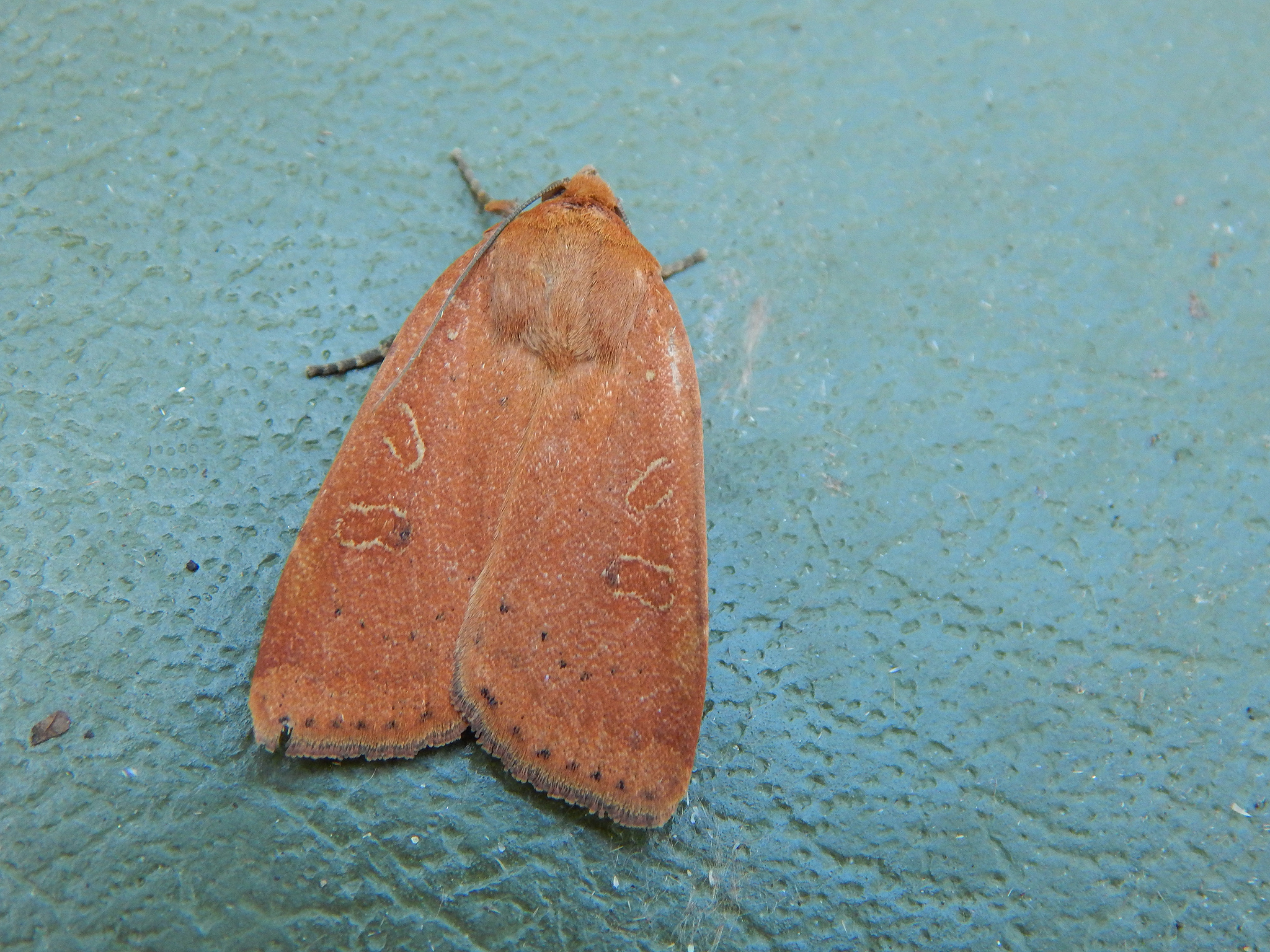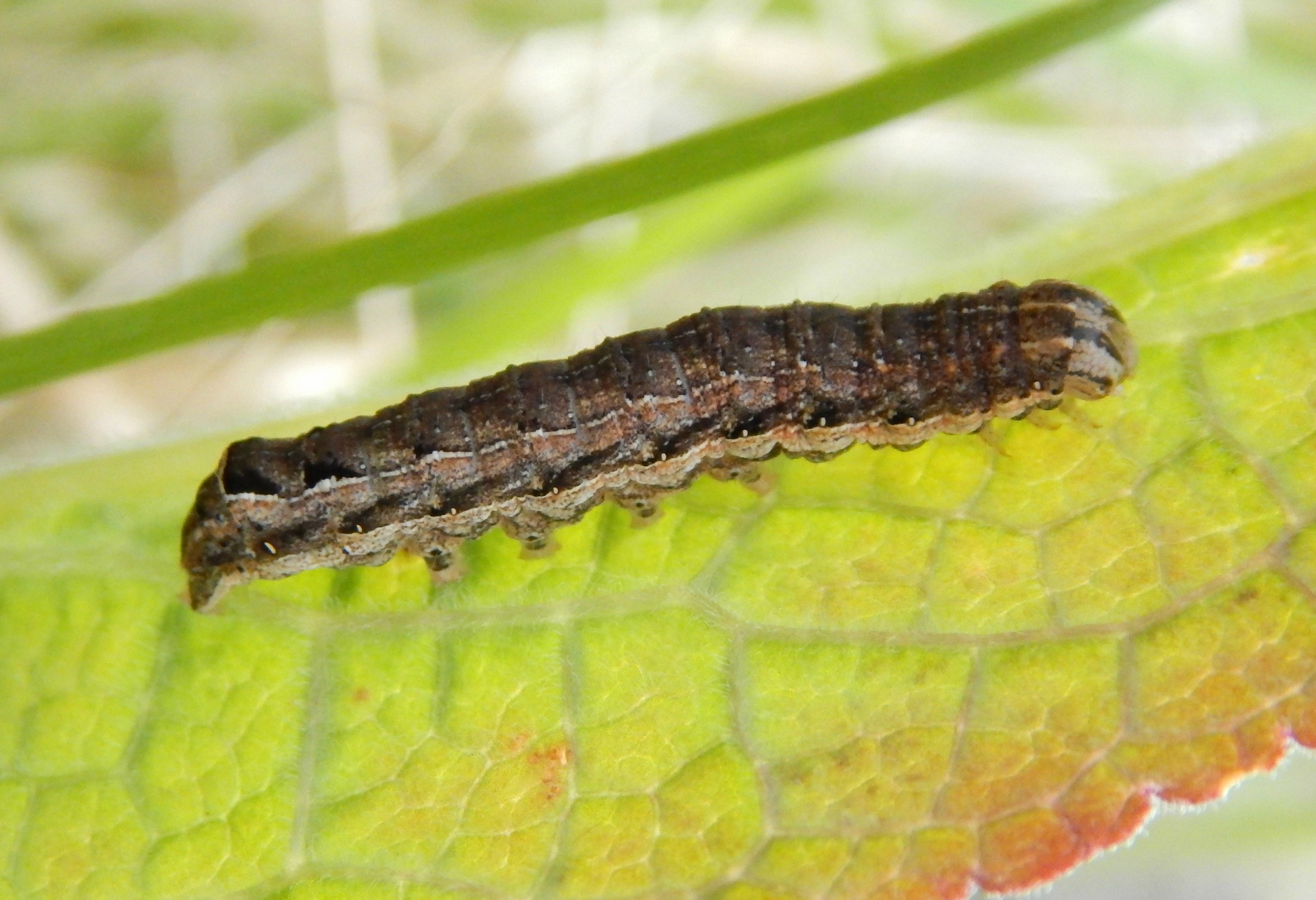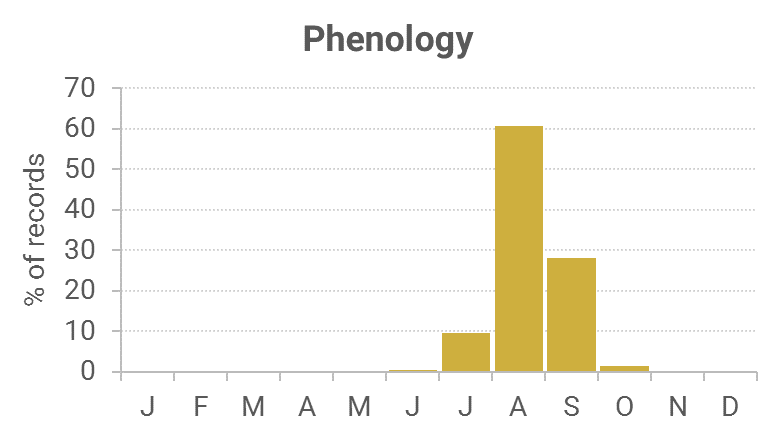Identification
Recognised by a combination of an absence of well-defined small black markings near the apex and a dark crescent on the hindwing.
Recording Method.
Attracted to light, also comes to sugar and flowers.
Life cycle
One generation. Overwinters as a small larva during August to May, with pupation underground.
Larval foodplants
A wide variety of herbaceous plants.
Habitat
Ubiquitous, present in a wide range of habitats.
History
Gordon (1913) had found it common everywhere in Wigtownshire and very variable in colour. His early and latest dates were 10th July 1897 and 25th September 1897 respectively. K. J. Morton of Edinburgh (1900) whilst on a visit in July 1899 to Wigtownshire had found this species in the Monreith area. William Evans received specimens from Mowat, the Killantringan lighthouse keeper during 1913-14 to aid his insect migration studies.
Sir Arthur Duncan (1909-84) during his lifetime had found it at Closeburn, Tynron and Castlehill, Dumfries (all VC72). Archibald Russell (1944) listed it as occurring near Gatehouse of Fleet (VC73) during the years 1942-43.
During 1976-92 there were eighty records from the Rothamsted stations, then, from 1992 to 2010 there were seven hundred records mainly from the regular trapped sites at Kirkton, Durisdeer, Cally Woods, Mersehead RSPB, Kirkland and Old Torr, with many records from other widespread sites across the region.

